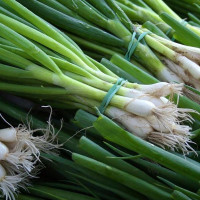Tamarind / Tamarindus indica
It is a tropical tree native to eastern Africa, including the dry deciduous forests of Madagascar.
Under favorable conditions, tamarind grows up to 20-30 m. At home, it forms a crown 1.5 - 2 m high. It has light green pinnate oval leaves, which eventually acquire a rich dark green color. In the evening they add up. Tamarind flowers have five pink or yellow petals with red stripes. Petals are collected in racemose inflorescences. The fruits are like long beans with indehiscent brown pods.
Red-brown pulp (pulp) is hidden under the peel, which is used in the preparation of sour and spicy dishes, snacks and sauces. Mature pulp with a sweet taste is good for desserts and healthy drinks. The pulp hides several smooth, hard, irregularly shaped seeds.
Lighting: An adult tamarind needs bright light, so a pot with a tree should be placed on a window facing south, southeast or southwest. For uniform development of the crown, it is recommended to rotate the plant a third of a turn. Lack of light leads to cessation of leaf growth and tree diseases. But in the heat, especially in the midday heat, you should not leave it.
Temperature: The temperature in the room should not fall below +15 degrees. Intense heat is not necessary, moderate temperatures are most favorable. Tamarind is afraid of drafts. Likes spraying. During fruit ripening, spraying should be stopped.
Watering: The plant needs soft settled water at room temperature. The accumulation of water in the pan should be avoided (this requires soil drainage). Moderate watering is optimal for the tree. In winter, waterlogging can cause root rot.
Fertilizer: It is recommended to fertilize tamarind every three months in spring and summer with any liquid houseplant food or organic matter. In the spring, if necessary, a transplant is possible.
Tamarind needs sanitary pruning: the crown is formed before the formation of 3-5 largest branches.

No questions about this product, be the first and ask your question.


















